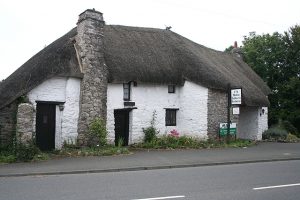Reducing distances. promoting local materials.
The ‘slow movement’ has been around for some time now, starting with food:
Futures Forum: Slow Food: “Pleasure, hedonism, enjoyment, tranquility, conviviality, richness”
Futures Forum: The Slow Movement
It has branched out into other areas:
Futures Forum: Slow medicine @ Radio 4
And we have the idea of zero-miles/kms:
Futures Forum: km zero – zero food miles
.
This is now entering the world of architecture and design, as covered by the Arch Daily earlier today:
.
Zero Kilometer Materials: Preserving the Environment and Local Cultures
Along with concerns about our environment, new movements, words, concepts, and terms related to these issues constantly emerge, which require us to always remain up to date. The word sustainability itself faced some resistance until it was incorporated into common vocabulary and used widely in the most diverse contexts. Currently, much discussion surrounds the terms circular economy, resilience, the 4 Rs, urban mining, and others. In addition, there are some sustainability-related movements that have been incorporated from activism in other fields, showing the fluidity of such issues. One such initiative is the 0 kilometer materials movement, which has been featured in manifestos and some projects, albeit timidly, in recent times.
The term km 0, or 0 km, was derived from the Slow Food movement. As a clear counterpoint to fast food chains, the idea of the movement is to promote the consumption of local ingredients, reducing the distance between producers and consumers. With this mission, it seeks to reduce damage to the environment caused by monoculture and the emissions of carbon dioxide / consumption of fossil fuels caused by the transportation of these products. In addition, Slow Food seeks to encourage the production and consumption of local and seasonal ingredients, maintaining regional customs and fostering a greater connection to and appreciation of the food.
Zero km materials take a very similar approach. These are materials that can be purchased locally, that do not need to be transformed, and, at the end of their useful life, that can be returned to the environment. In other words, the movement encourages the use of local products and, preferably, those that have not undergone major stages of industrial processing. The 0 km architecture approach primarily aims to provide more sustainable, healthy, economical, and socially accessible buildings that are strongly linked to the identity of their site.
…
Zero Kilometer Materials: Preserving the Environment and Local Cultures | ArchDaily
.
And these ideas are proliferating:
Zero-kilometer products for an eco-friendly fashion
Zero km wheat flour – Molino Bertolo
Regional materials | U.S. Green Building Council
.
 Although, of course, this has been around a long time…
Although, of course, this has been around a long time…
.
photo: Yealmpton: Old Mother Hubbards Cottage Devon vernacular stone, cob and thatch; the building now serves as a Chinese restaurant and is about 400 years old. Sarah Martin lived here in 1804 and is said to have composed the rhyme “Old Mother Hubbard”
File:Yealmpton, Old Mother Hubbards Cottage – geograph.org.uk – 1490387.jpg – Wikimedia Commons
.